Last year when I reviewed the iPhone 11 Pro, I titled it "an actual, meaningful upgrade". I called it that for two reasons. The first is that coming out of the gate, it was severely underestimated, using the same design for the third year in a row, and it's tough to get over the hump of the idea that it's not new if it doesn't look new. The other reason was that it actually was a significant upgrade. Apple produced a smartphone camera that was competitive for the first time in years, and battery life was phenomenal.
This year's iPhone 12 Pro series is what you'd expect in a follow-up. The design has been overhauled using flat edges in a throwback to the iPhone 4, the OLED screen looks even better, and the camera is improved, especially on the iPhone 12 Pro Max. It's a lovely device.
But you shouldn't buy it. Apple and Google both went all-in on facial recognition last year, ditching fingerprint sensors. Obviously, they couldn't predict a pandemic that was on the way that would render facial recognition useless when wearing a mask. Google adapted, adding a fingerprint sensor to this year's Pixel 5. Apple did not, opting to release the entire iPhone 12 series with Face ID only.
For that reason, I simply won't be able to recommend the iPhone 12 Pro Max, or any iPhone 12 for that matter. As long as we're wearing masks in public, you're better off using something with a fingerprint sensor, and if you're more comfortable in the Apple ecosystem, all sign point to just waiting until next year.
Specs
| CPU | A14 Bionic, dual 3.1GHz, quad 1.8GHz, Apple GPU (quad-core), next-gen Neural Engine |
|---|---|
| Display | 6.7 inches, 2778x1284, 458ppi, OLED, 19.5:9 |
| Body | 160.8x78.1x7.4mm (6.33x3.07x0.29in), 228g (8.03oz) |
| Memory | 6GB RAM, 128GB / 256GB / 512GB storage |
| Camera | 12MP f/1.6 + 12MP f/2.4 ultra-wide + 12MP f/2.2 2.5x telephoto, Front - 12MP f/2.2 |
| Video capture | 4K - 60fps |
| Battery | 3,687mAh, 20W fast charging |
| Colors | Graphite, Gold, Silver, Pacific Blue |
| Price | $1,099 / $1,199 / $1,399 |
Day one
Notably, there's no power adapter in the box, just a USB Type-C to Lightning cable. If any other manufacturer did this, I wouldn't care. After all, we do all have power adapters, and a lot of the stuff that comes with modern devices is wasteful. The only problem is that most people still have 5W Apple power adapters, which is what Apple has been shipping forever, even when fast charging was supported.
So not only will you not have a fast charger if you use one that you already have, but you won't even be able to use the cable that came in the box. Your adapter uses USB Type-A, and this is USB Type-C. Just the iPhone 11 Pro series came with an 18W USB Type-C adapter.
Also, there are no more Lightning headphones in the box, which is totally fine by me. I haven't used one of those in quite a long time, and I suspect that Apple has some telemetry on how many people use them.
Design
Apple's entire iPhone 12 series offers the first full redesign since the iPhone X was introduced three years ago. In fact, as far as the chassis goes, you could probably make the case that Apple has been using the same design since the iPhone 6. Of course, you could also say that this is a recycled iPhone 4 design. Maybe it's best not to overthink it and just say that we have something that looks completely new.

The iPhone 12 Pro series comes in four colors: Graphite, Silver, Gold, and the new Pacific Blue. Graphite is basically Space Gray rebranded for the new design. When I purchased this phone, I initially picked Pacific Blue. After all, I do usually get the new color, which would make sense to replace my Midnight Green iPhone 11 Pro. But a few hours after pre-orders began, I canceled my order and switched to Gold, because this new Gold color really pops.
You see, being that the iPhone 12 Pro Max shipped a few weeks after the iPhone 12 Pro, I was able to go to an Apple Store to actually see the colors in person, something that you usually can't do when pre-ordering an iPhone. Personally, I think the Silver and Gold models look the best, Pacific Blue is the one for those that want the new color, and Graphite is for those that just always buy Space Gray.

The back of the phone is still made out of frosted glass, and on the Gold model, it's still a sort of beige. You'll still get a gray back with Graphite, white with Silver, and so on. It's got gold accents all over though, which is what really makes it stand out. The three rear cameras are surrounded by transparent glass, but each lens has a gold border around them.
The stainless steel frame is flat, a throwback to the iPhone 4-style design that I mentioned earlier. And the frame is wider than the glass back or front, so if you look at it directly from either side, you can see the accent around the entire border. It's quite nice.

Unfortunately for some, you'll still find the Lightning port on the bottom of the device. Now that the iPhone 12 series has been announced for over a month, that means that we're well on the way with rumors about the iPhone 13 having USB Type-C, just like every year.

The rest is the same too. On the left side, there's a volume rocker and above that, a switch to control notifications. Personally, I love that switch and it's one of my favorite features of iPhones. OnePlus is the only Android OEM I know of that does this, and it's just so useful. Also on the left side is the nano-SIM slot, so that's the one thing that's been moved. The power button is still on the right side.

The iPhone 12 Pro Max is surprisingly comfortable to use, and perhaps I feel that way because I had such low expectations for this device. I've always criticized Apple for having big, flat backs that just aren't as comfortable to hold as curved backs. I will note that if you're moving from something smaller, you'll definitely notice it. I came from the 5.8-inch iPhone 11 Pro.
MagSafe
One of the new features that caught a lot of attention is MagSafe. MagSafe was a popular MacBook feature which was all about a magnetic charger. The idea was that if you went and tripped over the charging cable, the cable would fall out of your MacBook rather than pulling your MacBook crashing to the floor.

It's been replaced with USB Type-C on the laptop side of things, but now MagSafe is here for iPhone in the form of wireless charging. Like a good reviewer, I purchased a $39 MagSafe charger alongside my iPhone 12 Pro Max, and no, it does not come with a power adapter. It's just a USB Type-C cable with a magnetic disc on the other end.
The disc attaches to the back of the iPhone and charges it. Yes, it seems simple, and perhaps that's the beauty of it. Personally, I think that the MagSafe charger is also pointless. After all, it's just a cable with a wireless charger on the end; why not just use a wired charger?

But of course, MagSafe has other applications. For example, Apple's cases support MagSafe too, and you can add other accessories on the back like a magnetic wallet. Belkin makes a MagSafe car mount, letting you mount your phone on your dashboard without a clip. That Belkin product is the only MagSafe item that actually got me excited, but sadly, it's not out yet.
MagSafe is a cool idea, and frankly, its potential relies on the ecosystem of products that are released around it.
Display
Despite not being a high refresh rate display like virtually all of Apple's competitors, this screen is amazing. If you want proof, check out DisplayMate's analysis of the display, which gives it top-notch results. Yes, I will always make notch puns, because why not?

Ever since the iPhone X, Apple has had its big notch at the top of the display which includes sensors for Face ID and a front-facing camera. But also, the bezels are black, something that wasn't the case previously. Before the iPhone X, you had to get a Space Gray iPhone to get black bezels on the screen. I know; dark times.
The bezels are a bit smaller this year, as the display is a bit bigger at 6.7 inches. Given the new design, it looks amazing. The true blacks on the OLED display blend right into the black bezels, and it really makes you feel like you're just holding a big screen. It has a 2778x1284 resolution for a 458ppi pixel density, and Apple is calling it Super Retina XDR.

But as I said from the beginning, the down side is that it doesn't have a high refresh rate. Apple is sticking with a 60Hz screen for now, while companies like Huawei and Motorola are making 90Hz screens, and companies like Samsung and OnePlus are releasing phones with 120Hz screens. The higher refresh rates make for smoother motions.
Still, this screen just looks so good. And of course, refresh rate rumors for the iPhone 13 should be right up there with the USB Type-C rumors.
Camera
The camera on the iPhone 12 Pro Max is awesome. Let me explain something about my use case as a reviewer. I always get excited for the annual iPhone release because it's annual. I'll use this device for about six months, and I'll inevitably move back to Android in the spring since most OEMs have spring and fall releases. What I'm getting at is that I've been using a variety of Android phones for about six months.
And it feels good to be using the iPhone 12 Pro Max. There are definitely some great cameras on Android phones, such as those from Google and Huawei, but Apple provides a more complete experience. Google's Pixel 5 is great, but it's certainly not premium in the way that the iPhone 12 Pro Max is. Huawei's P40 Pro+ is awesome too, but you really can't buy it in the U.S. And in this reviewer's opinion, you should never buy a Samsung phone if you care about what your pictures will look like.
So let's talk about the new camera on the iPhone 12 Pro Max. It's a larger sensor for better low-light performance, and all three cameras are still 12MP. However, this year, the Pro Max doesn't have the same camera as the Pro as it has in years past. The iPhone 12 Pro Max actually has a better telephoto lens that gets you 2.5x zoom instead of 2x zoom.
The bad news is that lossless zoom is something that Apple still isn't taking seriously. You have companies like Huawei that are putting both a 3x and a 10x zoom lens on a phone to do some crazy stuff with hybrid zoom, and Apple is boasting 2.5x. Well, actually, it's boasting 5x zoom because it counts it from the ultra-wide sensor.
Video recording is improved as well. You can now record HDR video with Dolby Vision, and it looks beautiful. Indeed, Apple has long been the king of video capture, so just hearing that it's getting even better is great news. Unfortunately, you do have to switch to "high efficiency" video to get Dolby Vision HDR, just like if you want to record in 4K 60fps.
There are a few things to note here. If you're using the main sensor, it seems like you actually have to try to take a bad picture, like by shutting off night mode. And yes, night mode kicks on automatically. That's one of the nice things about Apple's camera features. While night mode has been a thing for a long time (Huawei was the first), Apple takes the thought out of it.
Night mode works with all three lenses, but you'll still notice that both ultra-wide and 2.5x zoom images struggle at night. In fact, when you switch to another lens, you'll almost always see the night mode indicator change the amount of time for exposure in an effort to compensate.
But here's the best part, or at least my favorite part. I really didn't have to throw out any images for this review. With almost every other phone, I throw out a ton of low-light images that are out of focus, blurry from movement, and so on. So many phones take too long to focus, especially in low light. And they can also take forever to take a picture, and if you're not paying attention, you might move the phone before it actually takes the shot, leaving you with a blurry mess.
I didn't have those issues with the iPhone 12 Pro Max, and frankly, it was kind of refreshing. This is a big issue that I've seen with devices from LG and OnePlus particularly.
Apple's camera on the iPhone 12 Pro Max is among the best around. The one area where it doesn't keep up is lossless zoom. While the ultra-wide and telephoto lenses can struggle in low-light, this isn't uncommon due to the nature of these types of sensors, and I do think that Apple does a better job than most of its competitors. But things like image processing, video capture, general low-light performance, ease-of-use, and more are really the best around.
Performance and battery life
The iPhone 12 Pro Max is probably the most powerful smartphone in the world. Apple's custom processors regularly beat out what Qualcomm has to offer, and if Qualcomm does come out on top, it's the following spring. You see, Apple releases new iPhones with brand new processors in the fall, and Qualcomm releases its new Snapdragon chipsets in the spring, so sometimes we see a back and forth.
Apple's A14 Bionic chipset is impressive, to say the least. It's the first 5nm SoC to be used in a smartphone, and we're also seeing it in the new iPad Air. With Dolby Vision video recording, Apple billed this as the first device that can record, edit, and compile Dolby Vision video, so it's got some power.

Battery life is fantastic as well. In many (if not most cases), the iPhone 12 Pro Max still had 50% battery life left when I went to sleep. Obviously, the battery is much bigger than the one that I had in my iPhone 11 Pro, although it is smaller than the battery in the iPhone 11 Pro Max, which had a 3,969mAh battery.
The entire iPhone 12 series supports 20W fast charging, even if you do have to buy the adapter separately. And of course, it supports 15W wireless charging, along with the new MagSafe technology.
For benchmarks, I used Geekbench 5, AnTuTu, and GFXBench. First up is Geekbench 5, which tests the CPU.
For one thing, you'll notice that the A14 has the best single-core score of any A-series chip yet, but it's still beaten in multi-core by both the A12Z and A12X that's found in Apple's iPad Pro. But you can also see that it beats the A13 in both categories by quite a bit.
We can compare this to Samsung's Galaxy S20+, which uses Qualcomm's latest processor, the Snapdragon 865, and got 909 on single-core and 3,160 on multi-core. Lenovo's Legion Phone Duel, which has a Snapdragon 865+, got 979 and 3,409, respectively. Next up is AnTuTu, which tests everything.
In this case, the Legion Phone Duel scores 612,768. The OnePlus 8 Pro scored 576,696, but somehow they both beat the iPhone in the CPU category. Perhaps AnTuTu changed how it does scoring at some point. Finally, GFXBench tests the GPU.
5G
MagSafe got its own section in this review because it was something that people got excited about during the event. 5G gets its own section because, well, Apple got excited about it. Yes, Apple spent a great deal of time talking up 5G, and for some reason, Verizon's 5G specifically.
So let's break down 5G, including why you need it in a smartphone, and why you really have nothing to be excited about. First of all, here's why you need it: you're spending a thousand dollars on a pocket computer and you should be future-proofed. Seriously, I wouldn't recommend a 4G phone to anyone right now unless you're spending under $400. But you're not spending under $400; you're buying an iPhone.
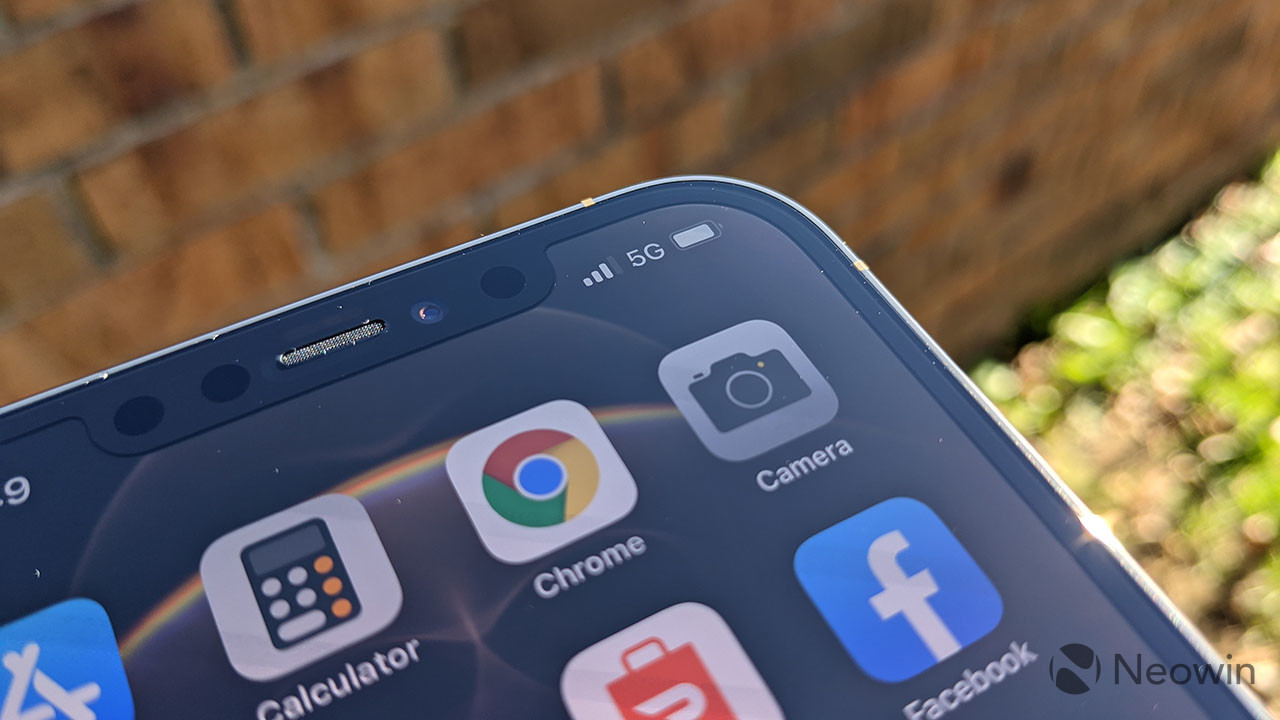
The bad news is that you will probably never notice any meaningful change over 4G LTE. Perhaps the experience will evolve over time, but there's nothing right now. I know what you're thinking, didn't Apple and Verizon talk about crazy gigabit speeds? Yes, and that's what every company is doing to talk up 5G right now, but it's also meaningless.
5G is a combination of sub6 bands and mmWave bands. Millimeter wave (mmWave) bands are high frequency waves that offer super-fast, multi-gigabit speeds. The only problem is that they can't penetrate, well, anything. For mmWave to work, you need to be in line-of-sight with an antenna. Even a window will block it. Companies will hype up the ability to download a whole season of a show while waiting in line to board a plane. Just be careful not to put your phone in your pocket while it's downloading, or the speeds will drop drastically.
Here's something that you can actually try with a mmWave smartphone. Go find a mmWave antenna. You'll have to go to a major city for this. Run a speed test and watch the super-fast data flow in. In the middle of the test, just put your hand in-between your phone and the 5G base station, and watch how quickly the speed drops.

In other words, mmWave is pretty useless. That's where sub6 comes in. Sub6 covers frequencies below 6GHz, and they consist of low-band and mid-band frequencies. T-Mobile is doing the best here because it actually has its own 600MHz spectrum, and the 2.5GHz band that it picked up from Sprint.
The idea is the lower the frequency, the better it is at penetrating buildings. Also, it's easier for your phone to send a signal back to the base station. Remember, the base station is much more powerful for sending a signal to your phone than your phone is at sending the signal back.
I use T-Mobile, and I was happy to finally see the 5G signal light up on an iPhone. I did run into some connectivity issues, but I later found out that that was due to a single app using 45GB of cellular data over the course of just 48 hours, so now I'm throttled for a while. That app was The Weather Channel by the way, and if anyone has a weather app that they really love, feel free to let me know.
Conclusion
The iPhone 12 Pro Max is an absolutely delightful device, and I love it. After using Android for about six months, it felt good to use this phone, and it got me thinking about what a comparable Android smartphone would be.
I couldn't think of one. I'm a fan of OnePlus devices like the 8 Pro, which has a beautiful QHD 120Hz OLED display and it's blazing-fast, but the camera doesn't even come close to what Apple is offering. Google's Pixels are always among my favorites, and while the camera is fantastic, it just doesn't feel premium. Like OnePlus, Samsung makes great hardware, but its image processing is so bad that I'd never carry it anywhere if I'm planning to capture an actual memory with a smartphone camera. Huawei phones are great, but they aren't sold in the U.S. and don't have Google services.
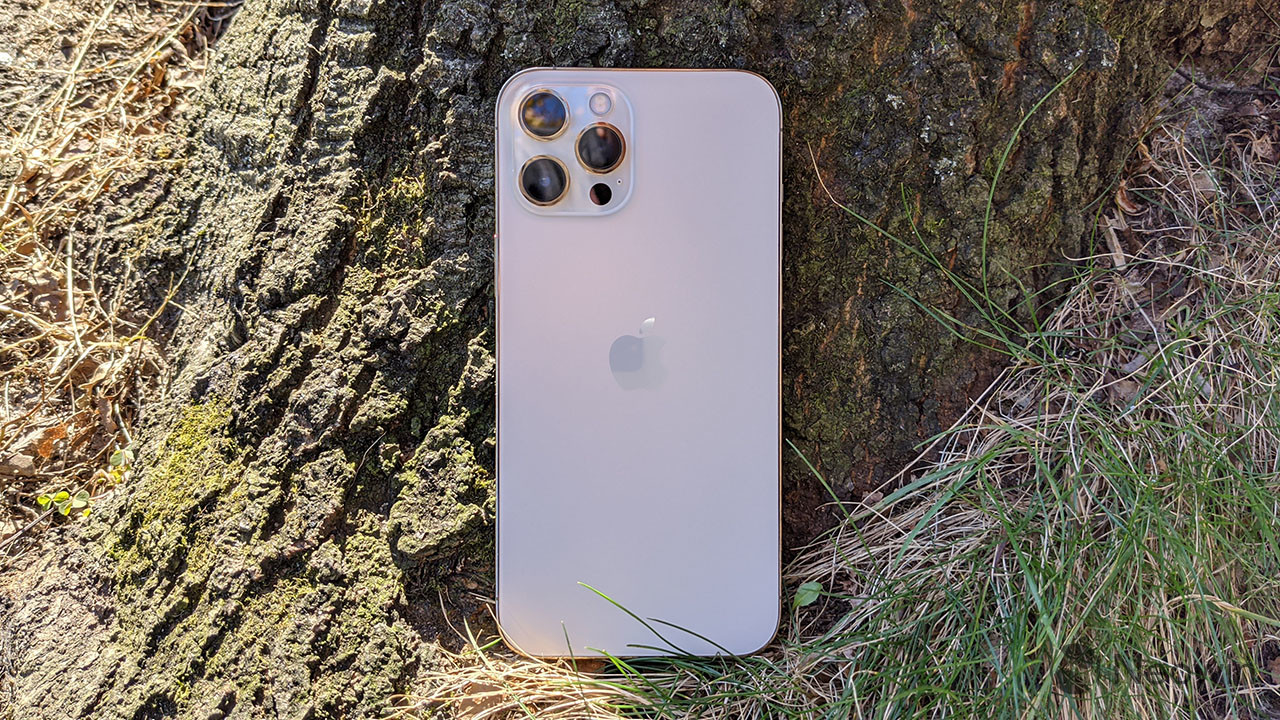
The iPhone 12 Pro Max is perfect in almost every way. It's got the fastest internals, a stunning design, a nearly perfect display, and one of the best cameras around. It would be the complete package, if there wasn't a pandemic going on.
But there is a pandemic going on, and most of us have to wear masks when we go out. If I'm at the supermarket and I open OneNote for my shopping list, I have to type a PIN, like a barbarian. Seriously, for a company that champions itself as one that cares about the issues, releasing a smartphone without a fingerprint sensor was incredibly tone-deaf, and for that reason, I simply can't recommend buying one.
If this pandemic ends and we go back to a world where being limited to facial recognition makes sense, then by all means, I recommend the iPhone 12 Pro Max. But until that happens, this device has to stay on the do not buy list. And the longer it takes, the better off you are just waiting for the iPhone 13.









































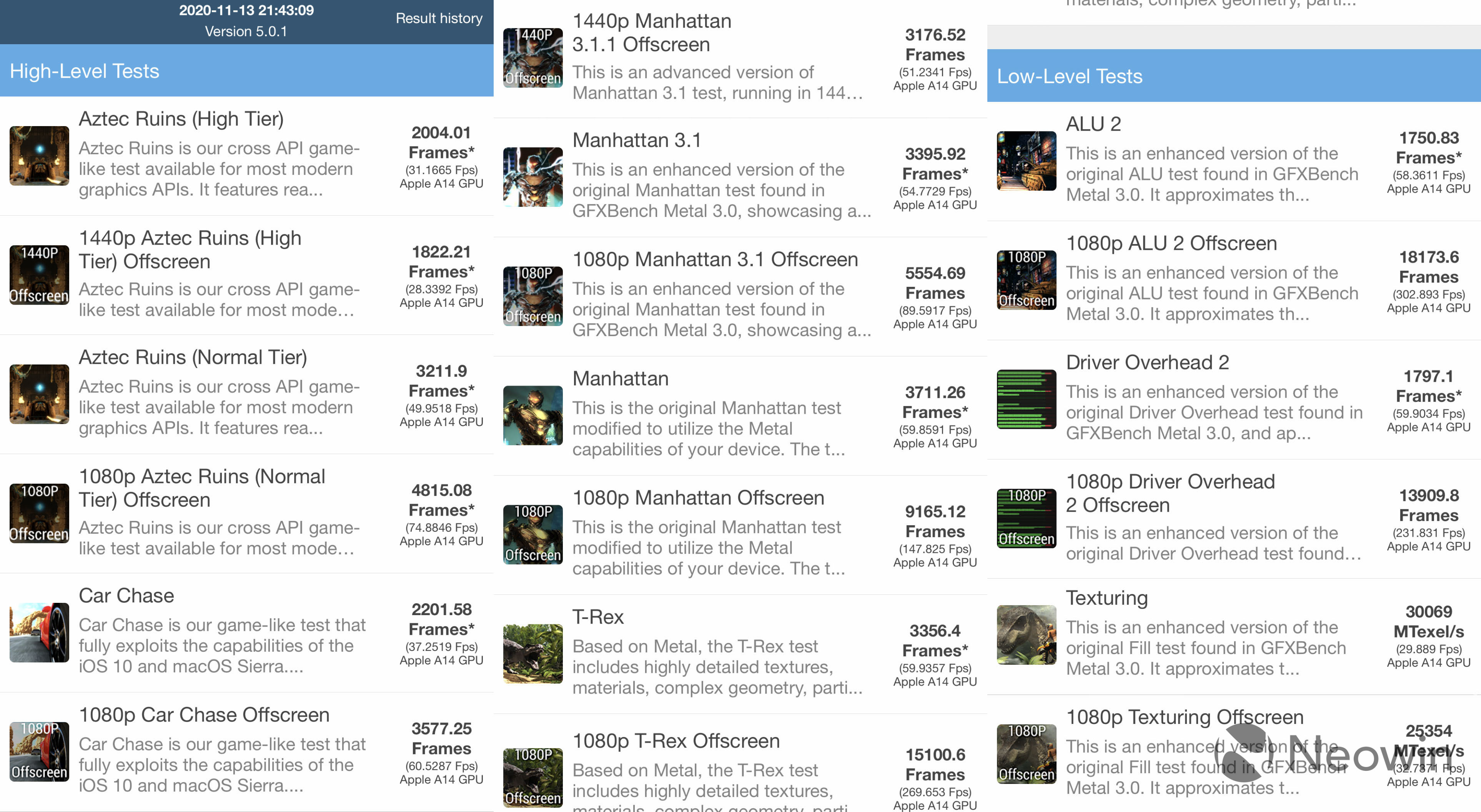
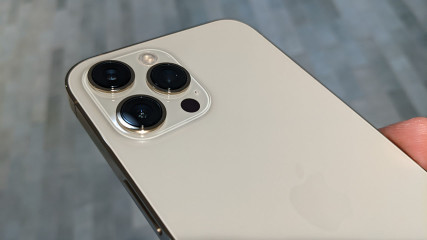
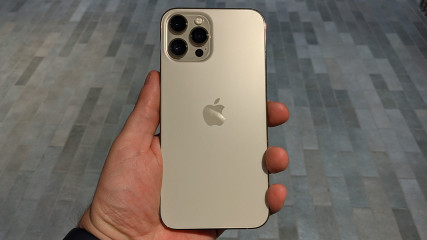
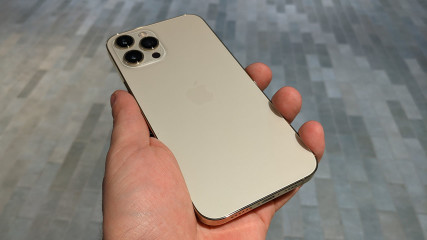
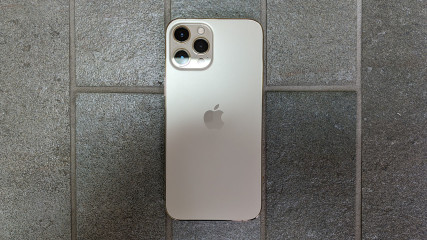
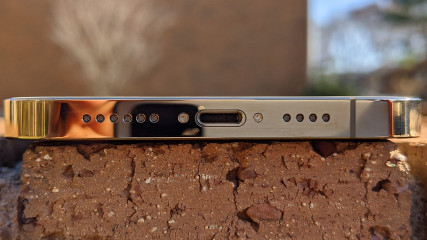
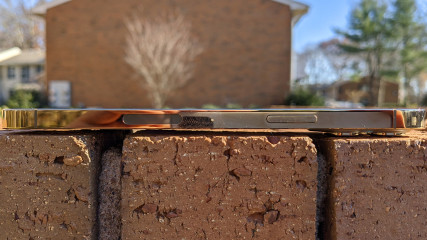
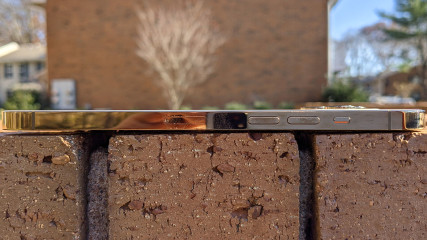
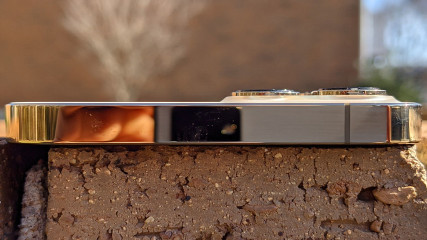
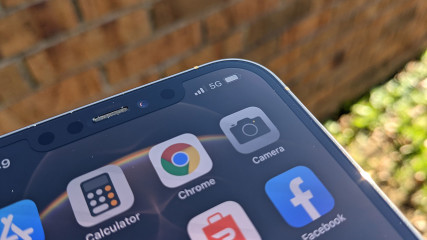
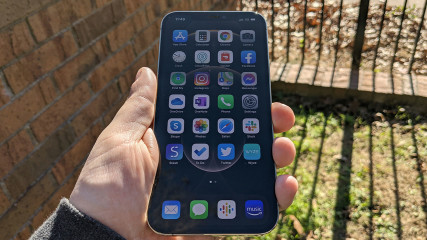
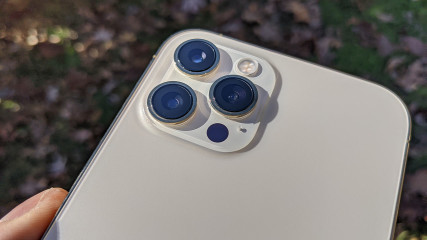
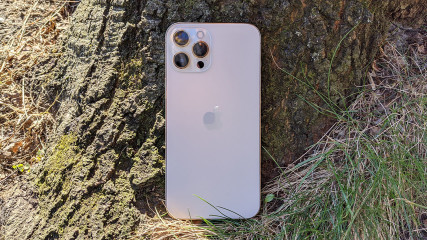
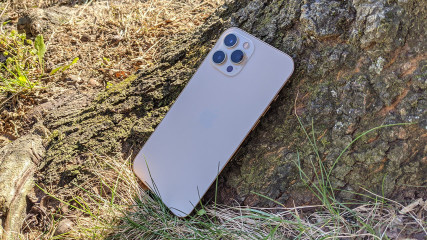
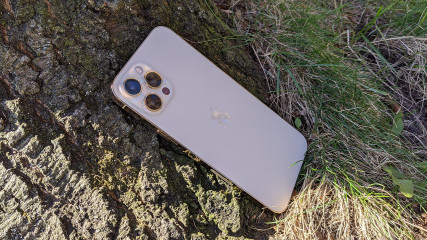
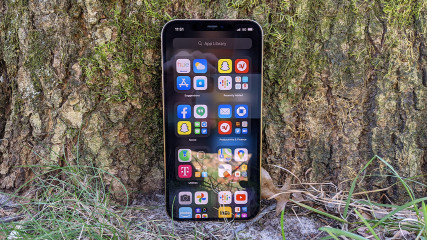
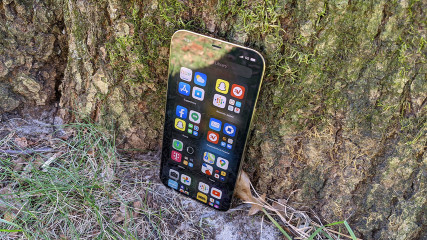
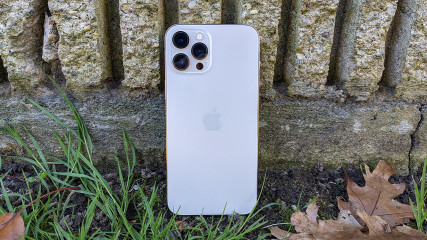
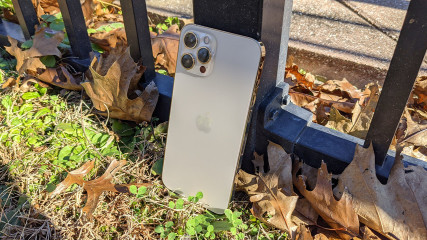
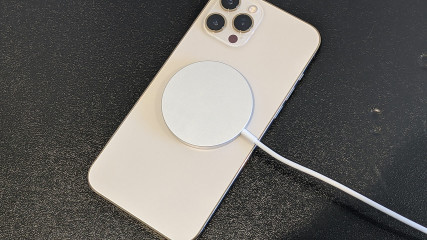
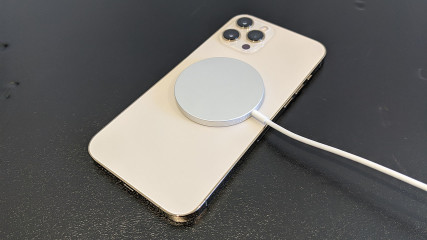









136 Comments - Add comment